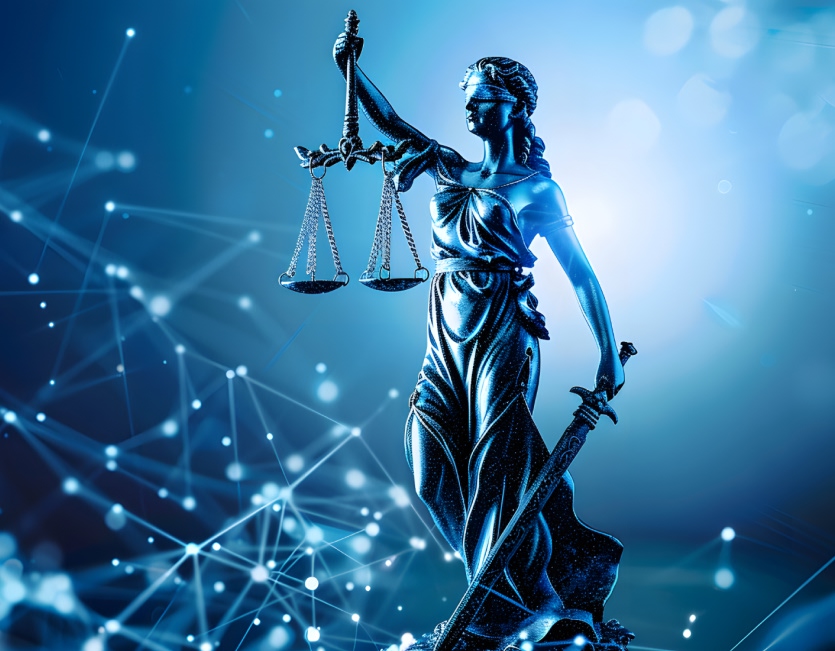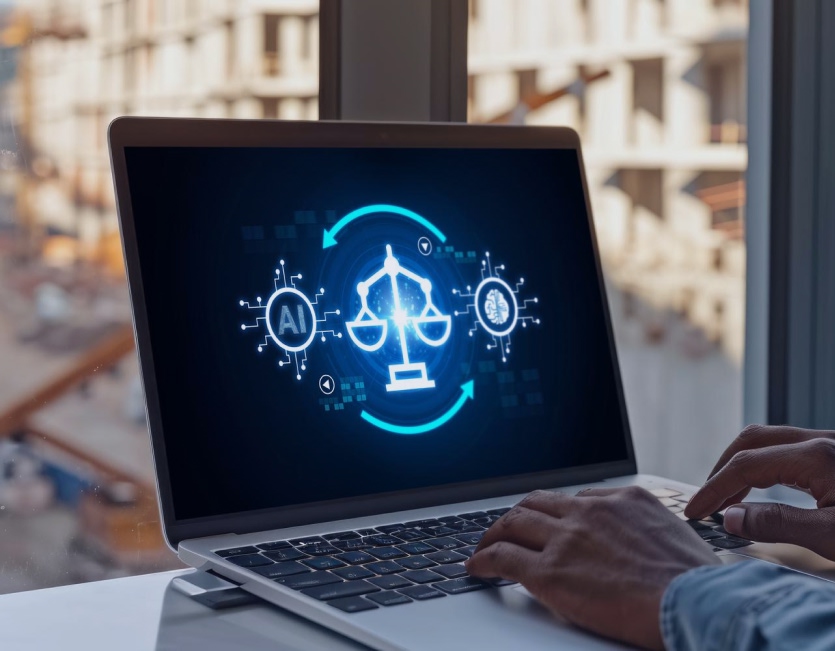There is a dual reality of Artificial Intelligence in legal practice: unparalleled potential tempered by valid concerns. Even as AI reshapes the profession, it brings challenges that no lawyer can afford to ignore.
AI in Legal Work: Unlocking Opportunities While Navigating Security Risks
-

Colin S. Levy
-
-
Feb 5, 2025
-
12 min Read
-

It was a routine matter – a class action lawsuit involving millions of documents. The law firm turned to an AI-powered e-Discovery tool to sift through the data, hoping to save time and costs. The results were impressive: relevant documents identified in hours rather than weeks, key patterns flagged that even seasoned attorneys might have missed. But as the team reviewed the findings, one partner paused. ‘How can we be sure it didn’t miss anything?’ she asked. ‘And what happens to all this data now?’
This is the dual reality of Artificial Intelligence in legal practice: unparalleled potential tempered by valid concerns. AI can transform the legal profession, but only if its adoption is approached with care, particularly when it comes to security and ethical risks.
AI’s Transformative Potential in Legal Work
For lawyers, time is precious, and AI offers tools to make every minute more productive. In legal research, platforms like Vlex offer far more than simple keyword searches. They use natural language processing to understand context, drawing connections between cases that might otherwise go unnoticed. This does not just speed up the process; it ensures lawyers are better equipped to craft compelling arguments.
Contract management, too, is benefiting from AI. Imagine an in-house legal team faced with reviewing hundreds of contracts during a merger. AI-enabled platforms like Malbek can scan for non-standard clauses, highlight potential risks, and even suggest alternative language. What once required a small army of associates can now be handled with a few clicks – and with greater accuracy.
AI’s predictive capabilities are equally compelling. Litigation analytics tools like Lex Machina analyse past cases to predict outcomes, helping lawyers refine strategies. While no tool can guarantee a win, these insights can give attorneys a strategic edge.
But even as AI reshapes the profession, it brings challenges that no lawyer can afford to ignore.
The Security Challenges Lawyers Must Address
1. Confidentiality in an AI World
The foundation of the attorney-client relationship is confidentiality, yet AI often requires access to sensitive data to function effectively. Many AI tools rely on cloud-based systems, raising questions about data storage and security. In one documented case, legal documents used to train an AI tool were inadvertently exposed because of inadequate access controls – a stark reminder of the risks.
Even when cloud providers claim strong encryption practices, jurisdictional issues can arise. For example, storing data on servers outside the U.S. might inadvertently subject it to foreign laws, potentially conflicting with a client’s expectations of privacy.
2. Black Box Decision-Making
One of AI’s greatest strengths is its ability to identify patterns and make predictions. But what happens when those predictions can’t be explained? A lawyer relying on an AI tool to flag risky contract clauses might wonder: Why was this clause flagged, and not others? Without clear reasoning, attorneys may hesitate to trust the outputs, or worse, fail to spot critical errors.
3. Bias in AI Systems
AI learns from data, and that data often reflects human biases. This has been well-documented in criminal justice applications, where AI tools assessing recidivism risk have disproportionately labelled individuals from marginalised communities as high-risk. While this issue is more widely studied in criminal law, similar biases could creep into civil applications, such as employment discrimination cases or insurance disputes.
4. Regulatory and Ethical Compliance
AI systems must comply with privacy laws like the GDPR and CCPA, but not all tools meet these standards. In one high-profile GDPR enforcement case, a company faced steep fines for transferring personal data to an AI vendor operating outside approved jurisdictions. Legal teams must ensure their AI tools are not just effective but compliant, lest they expose themselves to liability.
Tackling AI Risks in the Legal Profession
1. Securing Client Data
- Beyond Encryption: When law firms upload sensitive client information to AI tools, they are taking on significant security responsibilities. While encryption – both at rest and in transit – is a baseline requirement, it is far from sufficient. Legal teams must adopt layered security protocols to ensure robust data protection.
- Data Minimisation and Anonymisation: AI tools often require access to large datasets for training or processing, but not all data is equally necessary. Legal professionals should adopt a data minimisation approach, limiting AI access to only the essential information required for specific tasks. For instance, when using AI in contract review, redact client identifiers or proprietary terms before uploading documents. Similarly, anonymisation techniques – replacing identifiable details with generic placeholders – can significantly reduce risks if data is compromised.
- On-Premises AI Solutions: While many AI tools operate in the cloud, on-premises solutions provide an alternative for firms handling highly sensitive matters. By running AI software on local servers within a firm’s existing security infrastructure, lawyers can reduce exposure to external breaches. This is especially critical in cases involving national security, intellectual property disputes, or high-profile clients.
- Vendor Security Audits: Legal teams should treat AI vendors like any other third-party service provider, conducting detailed security audits before adoption. Key considerations include the vendor’s compliance certifications (e.g., ISO/IEC 27001, SOC 2 Type II), their approach to securing data during processing, and the jurisdictions where data is stored.
2. Ensuring Transparency in AI Processes
Transparency – or the lack thereof – is one of the most persistent challenges with AI in legal contexts. Many AI systems operate as ‘black boxes,’ making decisions or recommendations without revealing their underlying logic. For lawyers, whose work depends on precision and accountability, this opacity is unacceptable.
- Adopting Explainable AI (XAI): Explainable AI tools provide insights into how decisions are made, offering clear rationales for recommendations or flagged risks. For instance, if an AI tool flags a non-standard indemnity clause in a contract, an XAI-enabled system might specify that the flagged clause diverges from 90% of clauses in similar agreements analysed. This level of detail allows lawyers to assess the system’s conclusions critically, ensuring they remain in control of final decisions.
- Embedding Verification Protocols: Even with explainable AI, lawyers must verify outputs through human oversight. Establishing standardised review processes – such as double-checking flagged issues against internal best practices or engaging a second attorney for review – can catch errors the AI might introduce. This mitigates over-reliance on AI while maintaining professional standards.
3. Ongoing Training and Oversight
AI literacy is becoming as essential as legal writing. Lawyers need to understand not just how to use AI tools but also their limitations. Training programs should emphasise critical evaluation, ethical considerations, and the importance of human oversight.
A Future of Innovation and Responsibility
Returning to our e-Discovery scenario, imagine this: The law firm had thoroughly vetted its AI vendor, ensuring compliance with international data privacy laws. The system used anonymised data and provided explainable results, allowing attorneys to verify the AI’s findings. The team also had protocols in place to double-check critical outputs, blending human judgment with technological efficiency. In this hypothetical, the firm reaped the benefits of AI while upholding its duty to clients.
This balanced approach is what the legal profession must strive for. AI is not a panacea, nor is it a threat to the profession’s core values. It is a tool – one that, when used responsibly, can elevate legal work to new heights. By addressing security concerns proactively and embracing transparency and education, the legal industry can confidently step into the future, where technology and tradition coexist in service of justice.
-
Topics:
-

-
Colin S. Levy
Colin S. Levy is a legal technology leader and educator known for his expertise in legal tech, contract management, and innovation within the legal profession. As Director of Legal and Evangelist at Malbek, he helps organizations modernize contract processes and embrace technology-driven solutions. Colin’s work focuses on the intersection of law and technology, advocating for practical applications that enhance legal service delivery. He frequently writes and speaks on legal tech, with his insights featured in publications such as Above the Law and Bloomberg Law. Colin earned his J.D. from Boston College Law School and a B.S. from Trinity College.



 +971 50 9295048
+971 50 9295048  +91 9746059514
+91 9746059514